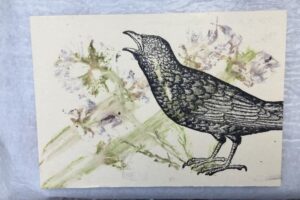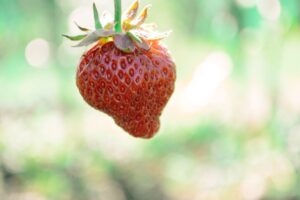March: every beginning is difficult
The starting signal for the climate garden project at the Uetikon am See cantonal school will be given at the beginning of March. Two greenhouses for plant experiments are to be built on the school grounds of the still very young cantonal school on the right bank of the Zurich. But just setting up the basic infrastructure poses major challenges for the biology department. In addition to the regular school day, the necessary amount of work is simply not possible. We are therefore very happy about the two ETH employees who supported us for two full days with the construction, whereupon we finally stand in front of our two greenhouses.
April: it’s getting warmer… and warmer… and warmer
For an entire afternoon, three high school graduates sweat their brows and shovel cubic meters of chips that form the floor of the greenhouses. To prevent the houses from sinking, the caretaker built precisely fitting wooden platforms. The school’s own experimental garden can be accessed from the school grounds on the one hand and, on the other hand, borders on the public stream path where people walk past every day. With the rising temperatures in spring, it becomes clear that the climate houses cannot be kept at the desired temperatures with the equipment provided. The scientific setting cannot therefore always be maintained. If the target values of +2 and +5 degrees are not reached, the qualitative setting of an increased temperature is given. The KUE, as a school that is still growing, is fortunate to be generously equipped with workloads in the area of technical staff. Running a climate garden means additional work not only for the biology teachers, but also for the laboratory technicians.
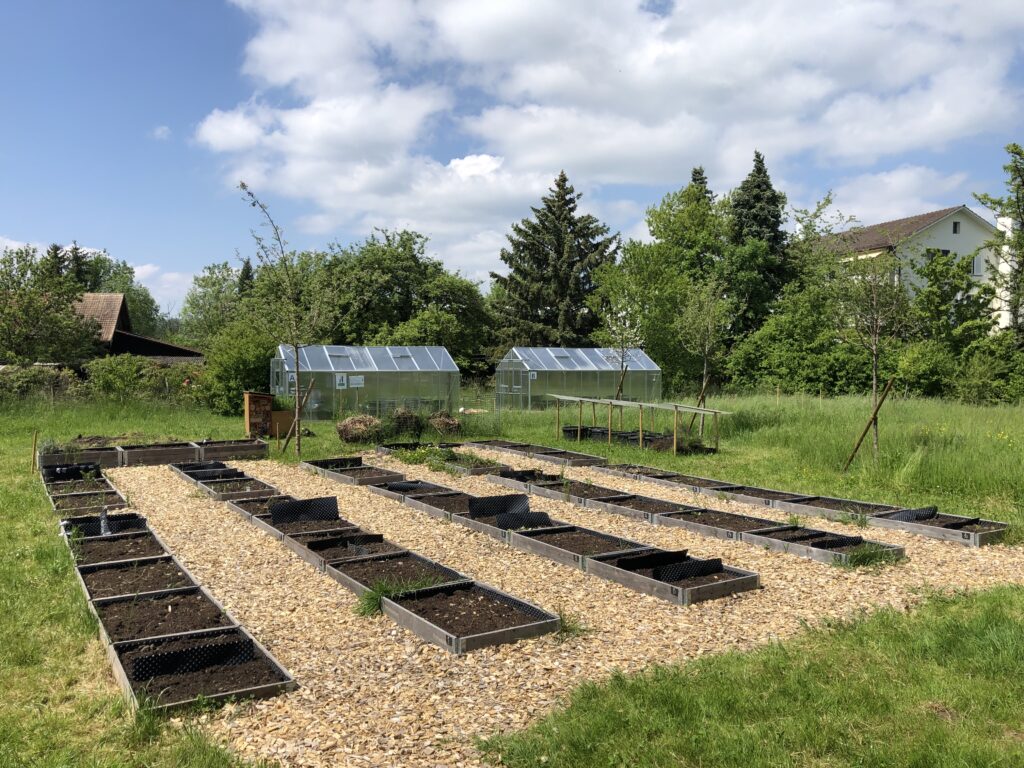
May: Research projects as far as the eye can see
The climate garden is a nice technical addition to the garden beds of the school’s experimental garden. In these, the students of the 4th grade carry out their own research projects “KUE-Quadratmeter” in the spring semester between the spring and summer holidays. In pairs, they receive a 1m2 bed and implement projects based on their previous knowledge of plant physiology, ecology and cell biology. You formulate exciting problems, design an experimental setup, implement these independently over several weeks and finally present the research results. The goal is for young people to get to know the scientific way of thinking independently and to develop a feeling for the practical feasibility of experiments. Many project groups can use the climate garden infrastructure for their experiments with drought stress, heat tolerance or watering protocols.
June: ETH comes to visit
The mycorrhiza workshop led by ETH is quite a challenge for the 4th grade students. They are used to working in experimental internships from the KUE’s newly designed biology curriculum, which places a lot of emphasis on hands-on elements, but these are usually selected in such a way that they almost infallibly guarantee success in the form of visible results. The workshop is not didactically what our students are used to, but it offers them an insight into everyday research at a university. Direct exchange with ETH researchers is a good opportunity for students majoring in biology who could possibly imagine a future in the natural sciences. On the one hand, the four hours planned by the PSC team are at the limit in terms of length, but on the other hand, the experiments and protocols are almost a little too close to the reality of biological research in terms of the moderate chances of success of individual experimental runs. Maybe it’s simply because eggplant and leeks don’t make the ideal test plants. In this field we are missing a practical transfer of know-how from schools that have carried out the climate garden project in recent years. We would benefit greatly from their experiences if they were prepared and passed on in a suitable form.
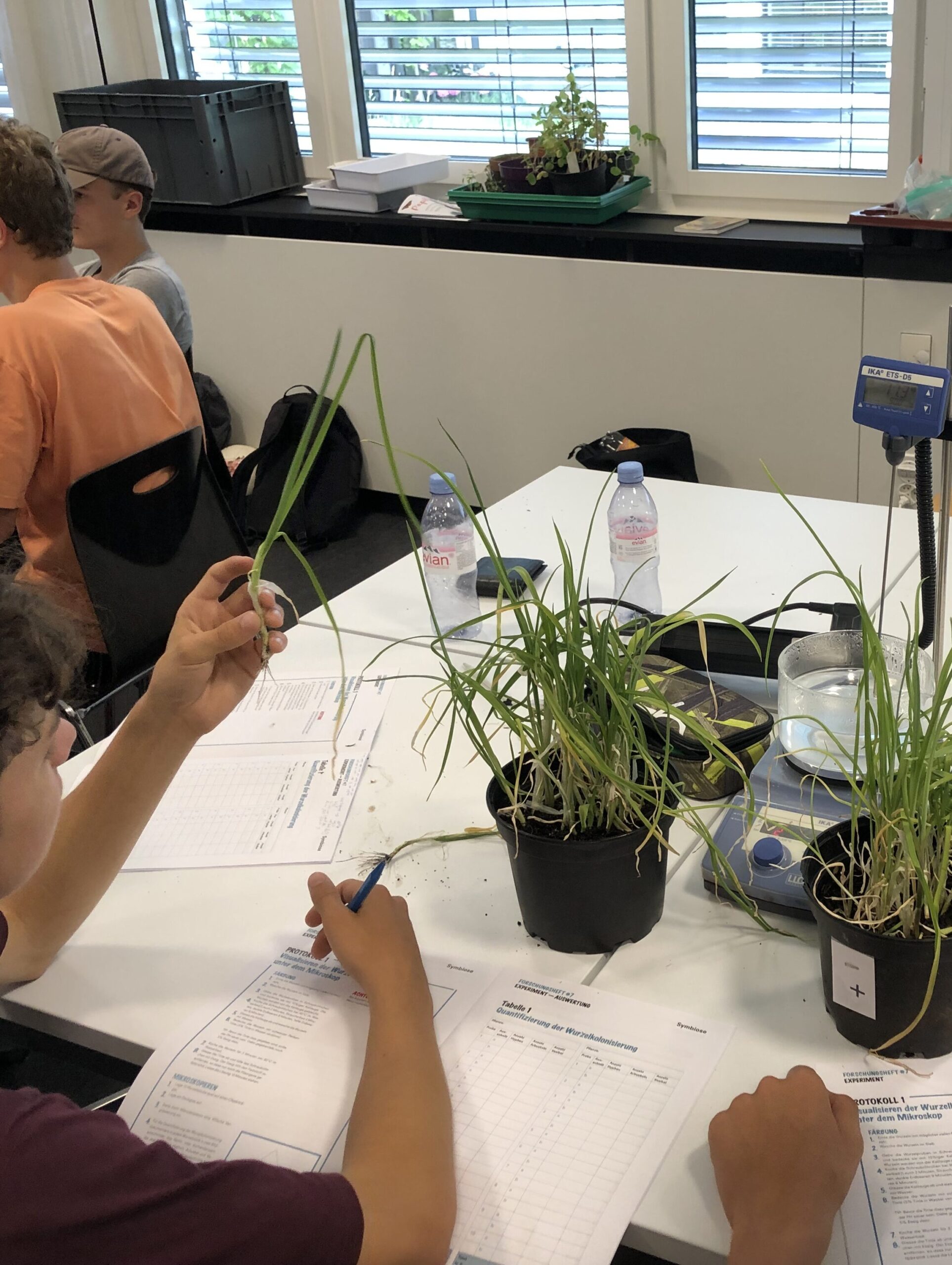
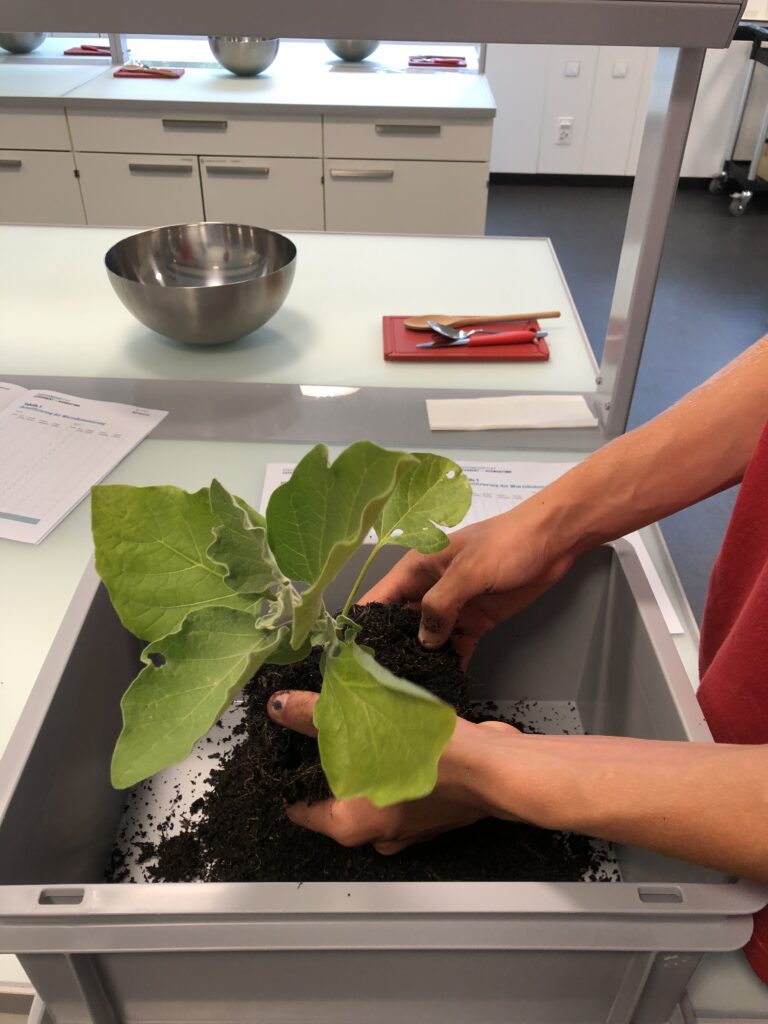

July: the impact on the public is growing
The summer holidays are just around the corner, the KUE students are looking forward to five weeks of freedom. The biology teachers who spend many an evening in their office at the end of the semester have long noticed a gray-haired man who, almost every day, extends his evening walk to include a walk through the KUE greenhouses. Sometimes he is accompanied by his granddaughters, who are still of primary school age. Glad to have an excuse to take a break from office work, the biologists sometimes come into the garden to chat. He reports that he is watching the growth of the test plants with excitement. The granddaughters seem to share his interest, but think that the future doesn’t look so bad, as the plants have already grown much taller in the warmer house. Summarizing the complex interrelationships of climate change in child-friendly language proves to be quite a challenge for high school didactic teachers.
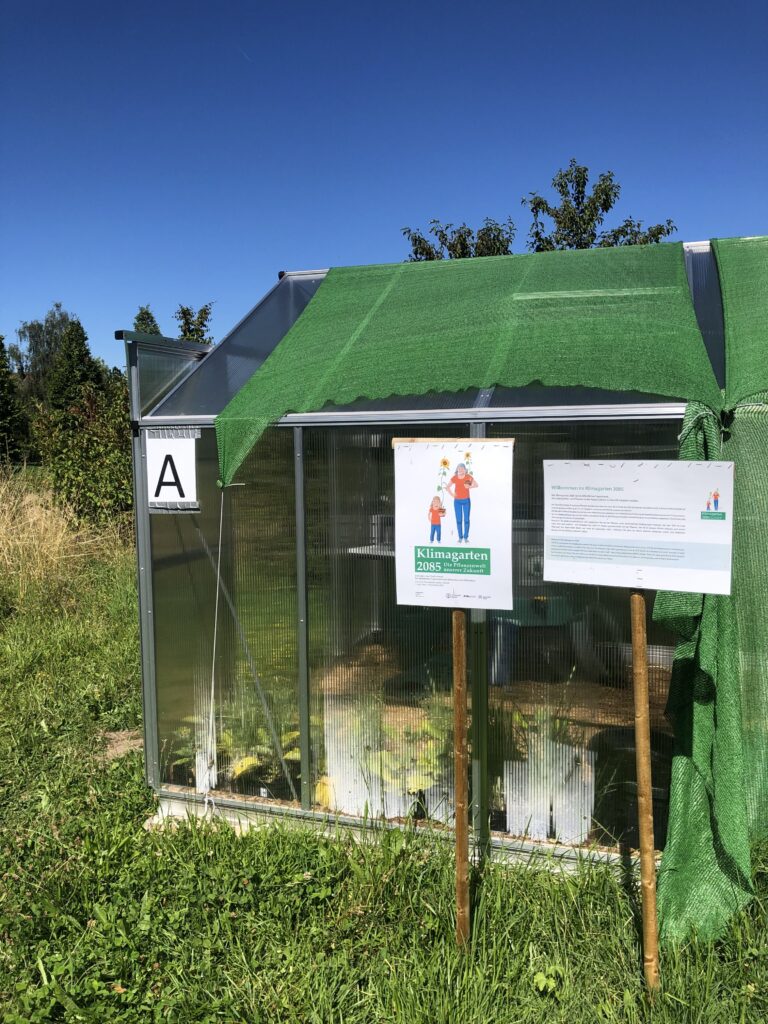

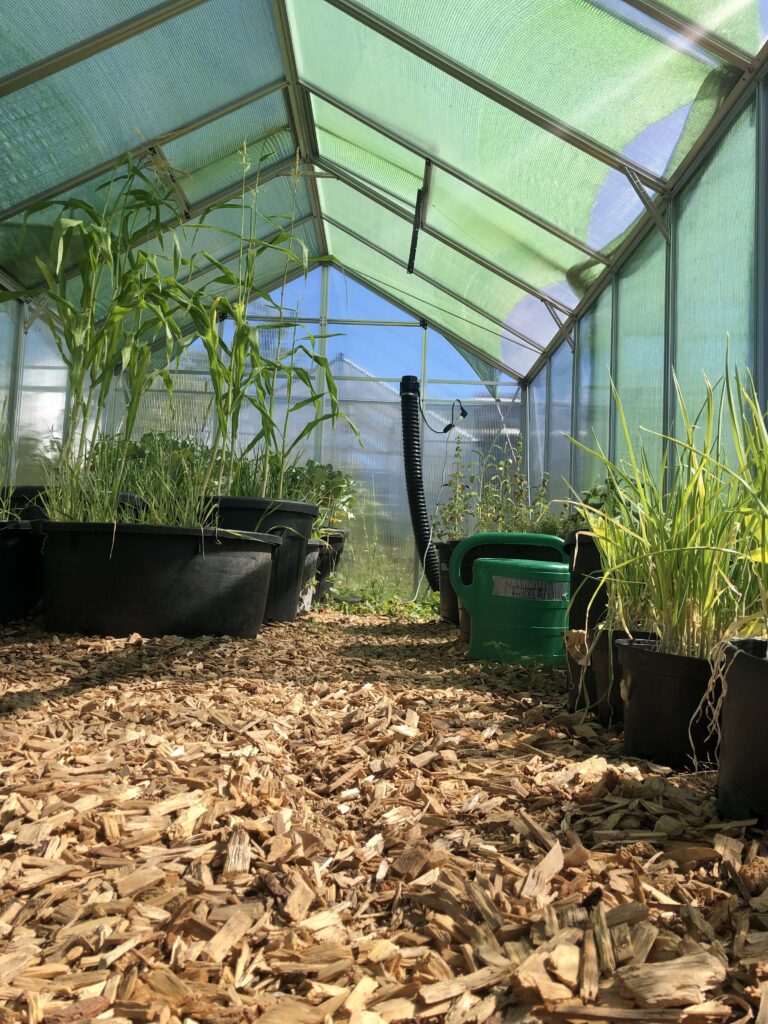
August: Matura work makes you want more
The 4th grade projects were completed before the summer holidays. Over the summer, the two greenhouses will also be used for several projects as part of KUE students’ Matura theses. They don’t miss the opportunity to come by, sometimes every day, during the five weeks of summer vacation and look after their plants. The increased temperatures are intended to simulate alternative future scenarios of global warming, against which plant growth and resistance will be tested. In this context, for example, the use and effect of bioactive fertilizer (compost tea) on the growth and yield of radishes is being investigated.
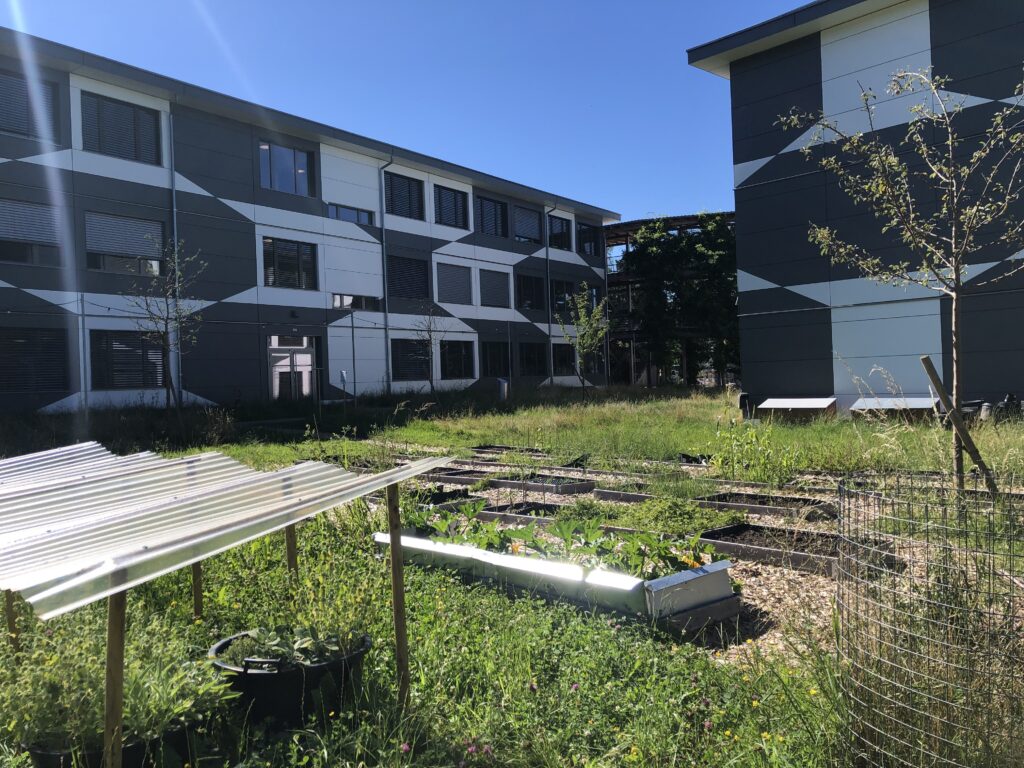
We are continuing to establish, improve and implement the use of the two greenhouses at the school in new ways. In the future, further Matura thesis and other innovative projects will certainly be able to be implemented there.
Original text in German, by Olivier Strauss & Moritz Rövekamp



